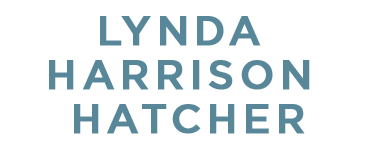Vulnerability
Read to the end of this post if you want a feel good tip for Spring …..
Recently, I went to an hour and a half, candlelight, yoga practice.
It was a cold, rainy Sunday afternoon at 4:00 and I figured that the class would be packed.
I got there about 20 minutes early and secured a place on the 2nd row between the lines of demarcation.
When you enter the studio, your senses reacclimate.
The room is darkened, hot and eerily quiet, except for the rustling of yogis laying out their mats, towels, straps, water bottles – stretching, breathing and starting to move inward – setting intentions for their practice.
For anyone who does not practice yoga, you are asked to leave your
keys, phone, shoes and other personal items in a cubby-hole outside of the room.
You are also encouraged to leave the chaos of your life and your ego at the front door.
I hadn’t been in several weeks and knew that it was going to be a challenge.
Thank God the lights are low, because I don’t make a big effort with the yoga attire, hair or make-up and I generally wear my glasses.
I take them off during the entire practice so that I can’t clearly see myself in the mirror, and like the emperor who wore no clothes, I pretend that no one else can see me.
My guess, by the sleek silhouettes in the room, is that I am an elder.
I’m not one of the superstars, which is OK with me, because I’ve already locked my ego in the car.
“The willingness to show up changes us; it makes us a little braver each time.”
Brene Brown,
Daring Greatly:How the Courage to Be Vulnerable Transforms the Way We Live, Love, Parent, and Lead
Yoga is about allowing yourself to be vulnerable.
“Vulnerability is not for the weak hearted.
It requires deep inner strength to admit what you don’t know, what you can’t do well, what scares you and what hurts you.
How do we develop the strength to stand in our vulnerability?
On our yoga mats, we learn to honor it. When we embrace vulnerability wholeheartedly, we discover a strength we did not know we had.
As we attempt to do a posture that seems impossible or scary, once we set aside our ego, and stop struggling to get it right, we surprise ourselves and nail a pose we’ve never done before.
We discover that accepting our vulnerability helps us create a boundary.
We don’t push too hard, or go too far, which keeps us safe.”
(Dr. Gail Parker’s Blog – Taking Yoga Off Your Mat)
Relative to mothering addiction –
“Owning our story can be hard, but not nearly as difficult as spending our lives running away from it. Embracing our vulnerabilities is risky, but not nearly as dangerous as giving up on love and belonging and joy – the experiences that make us the most vulnerable.
Only when we are brave enough to explore the darkness will we discover the infinite power of the light.”
Brene Brown
I am drawn to other people who are willing to expose their vulnerabilities.
I, too, am learning to expose my own vulnerabilities in yoga and now,
in my writing.
PS –
Now that spring is here, pull up Feeling Good, by Michael Buble, in your music library.
Raise the windows in your house or lower the windows in your car, press play on your music device, turn up the volume and let er rip……
